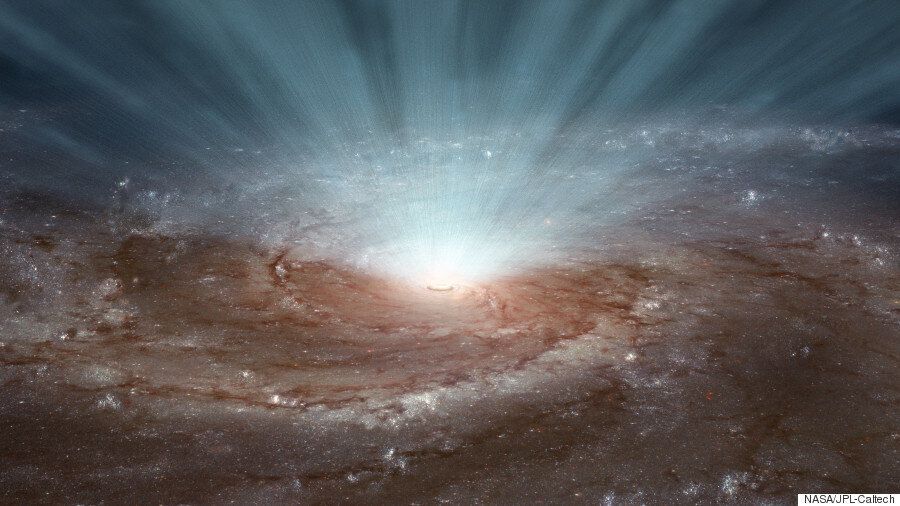Supermassive black holes are giant tornadoes, sucking in matter while at the same time creating vast cosmic winds which throw it back into deep into space.
It sounds astonishing. Actually it's pretty standard cosmology. What we didn't know was just how powerful these tornadoes were.
Now we do: very.
By measuring the 'wind' speed, shape and size of nearby quasar PDS 456, researchers at the California Institute of Technology have discovered that it was kicking out matter with more energy than a trillion of our suns every second.
These winds propel huge quantities of gas out into the far reaches of space, depriving stars of the fuel they need to be born.
The discovery was made using both the NuSTAR telescope and the ESA's XMM-Newton telescope where the team were able to observe the phenomenon from the nearby -- 2 billion light years away -- quasar.
While it was already known that black holes are inhibiting their galaxy's ability to grow, astronomers have until now been unable to take precise measurements.
By being able to measure the cosmic winds being creating by a galaxy's supermassive black hole astronomers can far better predict the growth of that galaxy, knowing that the stronger the wind, the harder it'll be for galaxies to form new stars.
